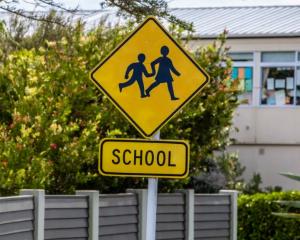Aucklanders: Welcome to Covid-19 Alert Level 2.9-ish.
Today New Zealand enters a new phase in its battle with Covid, specifically the Delta variant of the coronavirus.
On Monday afternoon, Prime Minister Jacinda Ardern gave probably the most difficult media conference she has had to so far. In essence, she was announcing the beginning of the end of the much-vaunted elimination strategy.
Delta’s arrival in New Zealand was always just a matter of time. As it will also, unfortunately, be in the South Island, although we can continue to count our blessings at the moment.
Undoubtedly it was initially the right approach for the Government and Kiwis to try to stamp it out. But over the past few weeks, as Aucklanders have sweated their way through a lengthening lockdown, the realisation has grown that Delta is just too tricky to eliminate.
Now, there can be little doubt Delta is here to stay, however successful our efforts to minimise its spread may be.
One thing it has done is help galvanise the message that it is vital to get fully vaccinated as soon as possible. If Delta alone doesn’t do that, the threat of potentially more dangerous variants in the future should.
There was a lot to get our heads around in Monday’s announcements. Ms Ardern was hesitant to say it bluntly, but, mixed up in the morass of messaging, was an implicit understanding that elimination is now unlikely, though it remains still highly desirable.
The announced changes to the alert levels, aimed at slowly dragging Aucklanders out of their increasingly agonising, wearisome and problematic lockdown, also reveal an accelerating erosion of the original system, which is now creaking and looking more and more out-of-date.
The alert levels were introduced in March last year to provide a simple guide for New Zealanders about the degree of threat from the virus and the appropriate responses. As with all such models, the levels needed to be logical, easy to follow and easy to remember.
Unfortunately, necessary tweaking during the past 18 months or so means each step is no longer as clear-cut. Talk of “Level 2.5” just confuses things further. In Auckland’s case, the new Level 2.9ish still rounds up to Level 3.
The three-step plan to rescue Aucklanders from Level 3 will be reviewed weekly but at this stage has no clear timetable, although Director-general of health Dr Ashley Bloomfield did mention in Monday’s briefing it could last from four to eight weeks.
In step one — from today — up to 10 people in two household bubbles can meet for a picnic, to hunt, play lawn bowls and go to the beach, probably not all on the same day. Early childhood education centres can reopen.
Step two will allow for outdoor gatherings of up to 25 people and the opening of more shops and public facilities, while in step three hospitality can reopen with up to 50 people allowed in indoor gatherings.
Unpopularly, the South Island and much of the North Island remain in Level 2, on watch in case Delta leaks further from the Auckland and Waikato regions.
The Government is now being widely criticised for its moves, not only by the usual suspects, and probably expected to be.
Te Punaha Matatini modeller Prof Shaun Hendy says the plan increases the risk of restrictions elsewhere in the country and that a move to steps two and three will be unsafe until there is a much higher level of vaccine uptake, possibly well into next month.
Associate Prof Siouxsie Wiles says she is “kind of gutted’’ by the move and hoped it would have happened next year, not now.
Employers and Manufacturers Association chief executive Brett O’Riley says “while it’s great to know that 10 people can have a picnic, we’d like to know when 10 people who are fully vaccinated can go back to work”.
The Government has tried to do what is right but, inevitably, has just ended up alienating both sides. Perhaps a way to win some favour back might be to introduce Alert Level 5, just for Brian Tamaki?












